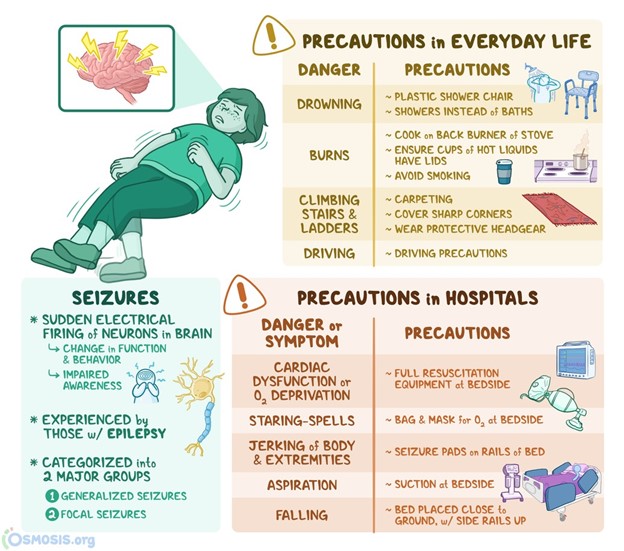A nurse is reviewing a client’s cardiac rhythm strips and notes a constant P-R interval of 0.35 seconds.
Which of the following dysrhythmias is the client displaying
Atrial fibrillation.
Complete heart block
First-degree atrioventricular block
Premature atrial complexes
The Correct Answer is C
- . Answer and explanation.
The correct answer is choice C, first-degree atrioventricular block.
This is because the PR interval is longer than normal, which indicates a delay in the conduction of electrical impulses from the atria to the ventricles through the AV node. A normal PR interval is 0.12 to 0.2 seconds, or 3 to 5 small squares on the EKG strip.
In this case, the PR interval is 0.35 seconds, which is more than 5 small squares.
Choice A is wrong because atrial fibrillation is a type of arrhythmia where the atria beat irregularly and rapidly, producing chaotic and variable P waves and an irregular ventricular response.
There is no constant PR interval in atrial fibrillation.
Choice B is wrong because complete heart block is a type of arrhythmia where there is no conduction of electrical impulses from the atria to the ventricles, resulting in independent and dissociated atrial and ventricular rhythms.
There are no consistent P waves or PR intervals in complete heart block.
Choice D is wrong because premature atrial complexes are extra beats that originate from the atria and interrupt the normal sinus rhythm.
They produce abnormal P waves that are different from the sinus P waves, and may have a shorter or longer PR interval depending on the timing of the impulse.
However, they do not cause a constant prolongation of the PR interval.
Nursing Test Bank
Naxlex Comprehensive Predictor Exams
Related Questions
Correct Answer is C
Explanation

Hyperthermia is a condition in which the body temperature is abnormally high, usually due to exposure to heat, infection, or certain medications.
Hyperthermia can cause neurological complications, such as seizures, confusion, or coma. Therefore, the nurse should initiate seizure precautions for an adolescent who has hyperthermia to prevent injury and protect the airway.
Choice A is wrong because covering the adolescent with a thermal blanket would increase the body temperature and worsen hyperthermia. The nurse should remove excess clothing and use cooling measures, such as fans, ice packs, or cool fluids.
Choice B is wrong because submerging the adolescent’s feet in ice water would cause vasoconstriction and shivering, which would reduce heat loss and increase heat production. The nurse should avoid using extreme cold or ice water to cool the body.
Choice D is wrong because administering oral acetaminophen would not be effective for hyperthermia caused by non-infectious factors, such as heat exposure or medications.
Acetaminophen lowers the body temperature by reducing the hypothalamic set point, which is not altered in hyperthermia. Additionally, oral medications may be difficult to swallow or absorb in a hyperthermic patient.
Normal body temperature ranges from 36.5°C to 37.5°C (97.7°F to 99.5°F). Hyperthermia is defined as a body temperature above 38.5°C (101.3°F).
Correct Answer is D
Explanation
The correct answer is choice D. The client is oriented times three.
This means that the client knows who they are, where they are, and what time it is. This indicates a high level of consciousness and a normal Glasgow coma scale (GCS) rating of 15.
Choice A is wrong because the client withdraws from pain.
This means that the client reacts to a painful stimulus by pulling away from it. This indicates a lower level of consciousness and a GCS rating of 4 for motor response.
Choice B is wrong because the client is unable to obey commands.
This means that the client does not follow simple instructions such as moving a limb or opening their eyes. This indicates a lower level of consciousness and a GCS rating of 1 or 2 for motor response.
Choice C is wrong because the client opens eyes to sound.
This means that the client does not open their eyes spontaneously, but only when they hear a loud noise. This indicates a lower level of consciousness and a GCS rating of 3 for eye opening.
The Glasgow coma scale is a clinical tool used to assess the level of consciousness of a person after a brain injury.
It consists of three tests: eye opening, verbal response, and motor response.
Each test has a score range from 1 to 6, with higher scores indicating higher levels of consciousness. The total score ranges from 3 to 15, with lower scores indicating higher risk of death.
Whether you are a student looking to ace your exams or a practicing nurse seeking to enhance your expertise , our nursing education contents will empower you with the confidence and competence to make a difference in the lives of patients and become a respected leader in the healthcare field.
Visit Naxlex, invest in your future and unlock endless possibilities with our unparalleled nursing education contents today
Report Wrong Answer on the Current Question
Do you disagree with the answer? If yes, what is your expected answer? Explain.
Kindly be descriptive with the issue you are facing.
